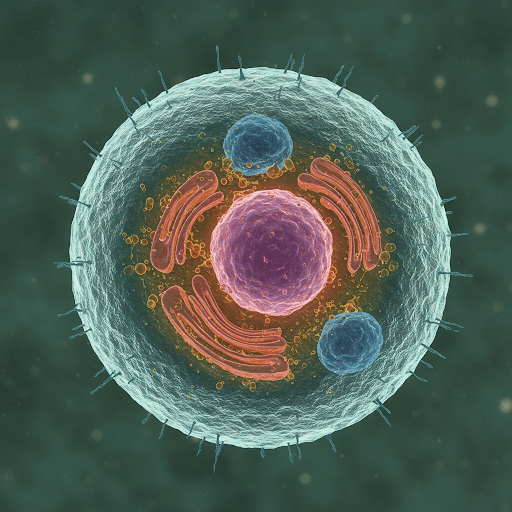For decades, cell counting was treated as a routine, almost trivial pre-analytical step. Most laboratories acknowledged it as necessary, but few recognized it as a critical determinant of downstream data quality. In the past two years, however, the explosive growth of high-resolution single-cell technologies—transcriptomics, proteomics, secretomics, and functional phenotyping—has exposed a challenge that was previously easy to overlook: the inherent variability and operator-dependent bias embedded in manual cell counting.
In this landscape, the automated cell counter has emerged not merely as a convenience but as an indispensable component of data integrity. Logos Biosystems, through its LUNA® family, has redefined what a cell counter can achieve—moving beyond enumeration toward true quantitative standardization.
The Field Has Outgrown Manual Counting
Classical hemocytometer-based counting may be simple, but it struggles to meet the precision demands of modern workflows. In high-sensitivity downstream analyses, small errors in input concentration propagate through entire protocols, creating variability that is often misattributed to biological noise.
A typical example: in single-cell RNA sequencing, loading cell suspensions outside the optimal concentration range can lead to doublet formation, over-encapsulation, or loss of viable cells, which reduce usable transcriptome depth. A 10% deviation in cell input can alter the effective cell recovery and skew the representation of rare populations.
Manual counting introduces variability at multiple levels:
- Human estimation of cell boundaries
- Inconsistent trypan blue mixing
- Delays between mixing and counting that alter viability
- Counting fatigue and optical bias
- Subjective classification of ambiguous cells
These errors grow even more problematic when samples are fragile, rare, or have non-standard morphologies.
Automated imaging-based platforms address these limitations directly. Logos Biosystems’ approach—precise optics, standardized image acquisition, and algorithmic classification—ensures that concentration data are not contaminated by operator bias.
Automated Cell Counters as Instruments of Reproducibility
A fundamental shift in molecular biology is underway: reproducibility is gaining importance equal to innovation. Funding agencies and journals now expect transparent methodologies, rigorous quantification, and control of upstream variables.
The automated cell counter is one of the few instruments that directly impacts multiple reproducibility bottlenecks simultaneously:
1. Accurate Viability Measurements
Viability is rarely the binary parameter many protocols treat it as. Poorly measured viability—especially in heterogeneous or partially apoptotic cultures—compromises:
- Viral transductions
- CRISPR editing efficiency
- Primary cell seeding for differentiation
- Cytotoxicity assays
- Organoid formation efficiency
Logos Biosystems’ fluorescence-based counters (e.g., LUNA-FX7™) quantify viability using multi-channel fluorescence, distinguishing viable cells from debris, apoptotic bodies, or subcellular fragments that manual counting often misclassifies.
2. Standardized Inputs for High-Demand Workflows
- Modern platforms require strict cell concentration control:
- 10x Genomics workflows
- CAR-T cell manufacturing
- Long-term stem cell expansion
- Microfluidic encapsulation
- Single-cell imaging assays
The LUNA® line minimizes variance through fixed imaging parameters and algorithmic classification, turning what used to be an operator-dependent step into a quantifiable, reproducible metric.
3. Minimization of Analysis Artifacts
Many biologically “unexpected” findings are actually technical artifacts introduced by inconsistent seeding densities or viability fluctuations. Automated counting helps stabilize experimental conditions across:
- Clonogenic assays
- Drug response profiling
- High-throughput screening
- Electroporation/transfection pipelines
By producing accurate cell input numbers, the cell counter becomes a gatekeeper of experimental stability.
The Rise of Intelligent Counting: Beyond Enumeration
What makes Logos Biosystems unique is that it treats cell counting not as a mechanical task but as an analytical problem. The modern LUNA® systems incorporate sophisticated image analysis pipelines that do more than detect and label cells—they interpret biological features.
Deep-learning-enhanced classification
Cells are recognized not simply by circularity or size, but through a multi-parameter optical signature. This is especially important for:
- Irregular primary cells
- Mixed populations
- Difficult-to-count cell lines (e.g., sticky, clumped, filamentous)
- Precision fluorescence quantification
- Fluorescent viability dyes, nuclear stains, and membrane markers allow the cell counter to differentiate viable cells, dead cells, debris, and non-cellular objects with exceptional accuracy.
Adaptive segmentation algorithms
These algorithms adjust to local features in the image field—contrast changes, edge density, and complex backgrounds—resulting in consistent counts across a range of sample conditions.
In other words, the cell counter becomes a tool for biological interpretation, not just numerical output.
Scaling with the Demands of Modern Research
Many laboratories underestimate the time lost to manual counting. In high-throughput settings—CROs, pharmaceutical screening labs, immuno-oncology facilities—automated platforms like the LUNA-FX7™ can process hundreds of samples per day.
Key advantages include:
- Eight-channel slide compatibility
- High-throughput workflow integration
- Automated data logging and sample traceability
- Regulatory compliance support (audit trails, calibration logs)
- Robust QC pipelines
This transforms the cell counter from a convenience instrument into a centralized quantification hub for entire research programs.
A New Philosophy of Cell Preparation
As biology moves into the single-cell and high-dimensional era, sample preparation is no longer just preliminary; it is foundational. The upstream quality of a cell suspension determines:
- Whether rare cells will be detected
- How uniformly cell populations will be represented
- Whether downstream molecular signatures are reliable
- How interpretable the biological conclusions will be
Logos Biosystems’ LUNA® line is built around this philosophical shift: that cell counting is a scientific step deserving the same rigor and precision as sequencing, imaging, or mass spectrometry.
The automated cell counter has officially outgrown its role as a simple lab tool and become a vital component of experimental fidelity.
